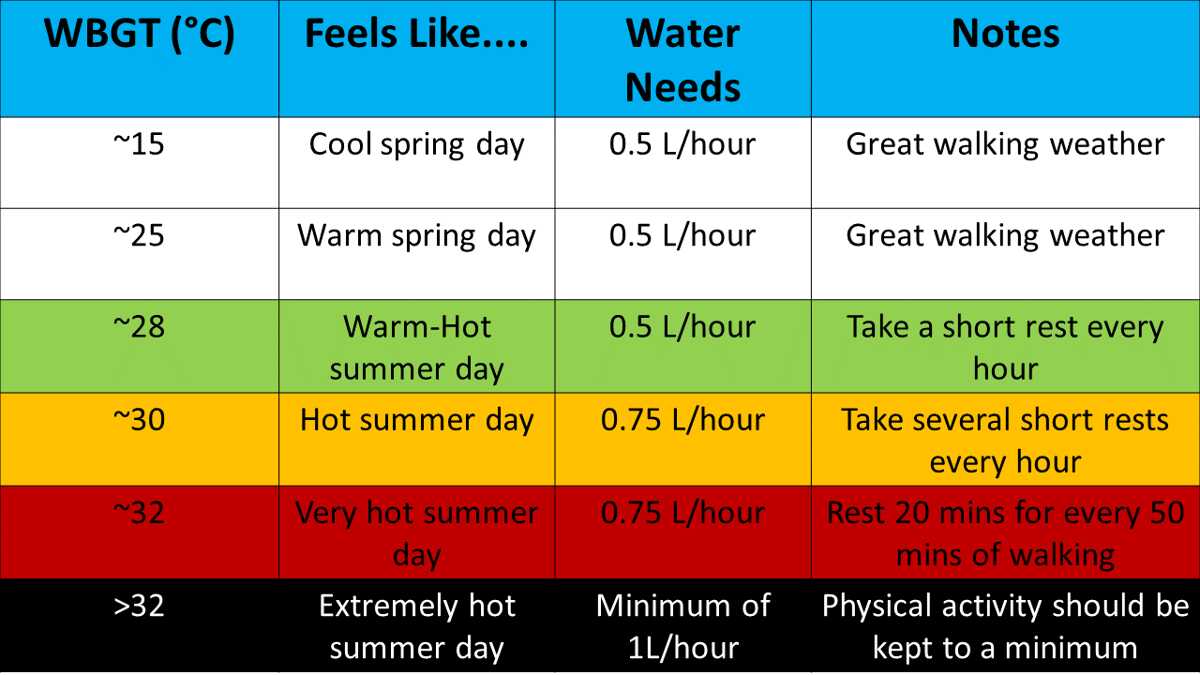{{{description}}}
Incredibly, the human body is mostly water, about 50-70% for males and 40-60% for females. Hence, adults have 30-40 kg of water. A loss as small as 2% of this water may have serious effects on performance[1], so staying well hydrated is critical for feeling good and performing well on a bushwalk.
Water comes from fluids and foods with high water content such as fresh or tinned fruit. Water loss occurs through sweat, urination and respiration. Water intake and water loss is a delicate balancing act that can easily get disrupted under changing weather conditions and hard physical work.
Sweat increases due to hotter air temperature, higher humidity, more exertion or a combination of these. Sweat is the body’s cooling mechanism; sweat resting on the skin surface cools the skin. But it comes at a price: loss of body water, triggering thirst, and a desire to drink and replenish body water. Water loss due to sweat is far lower when resting in shade and when there’s more wind chill.
Wet bulb globe temperature (WBGT) is a ‘feels like’ temperature based on actual temperature plus humidity, wind chill and shade. WBGT provides a more accurate indication of the temperature as perceived by humans. Probable WBGT can be used to plan which walk to do and how much water to carry.
US Army guidelines give a good indication of water needs[2], translating well to Australian bushwalks.
Under spring conditions (WBGT = 15-25°C), bushwalkers carrying a pack of under 10 kgs require about 0.5 L of water for every hour of walking. So a typical 4 hour spring day walk means that 2 L should be drunk. However, it only takes an increase of 5°C (WBGT) for the water requirement to increase by 50% to about 0.75L of water for every hour of walking.
Once the WBGT exceeds about 32°C, water requirements are about 1 L per hour, and extended walking may become impractical. Under such conditions, walks should have ample supplies of reliable water at regular intervals, with distances and climbing shorter if at all possible. Another option is to walk during the cooler parts of the day.
